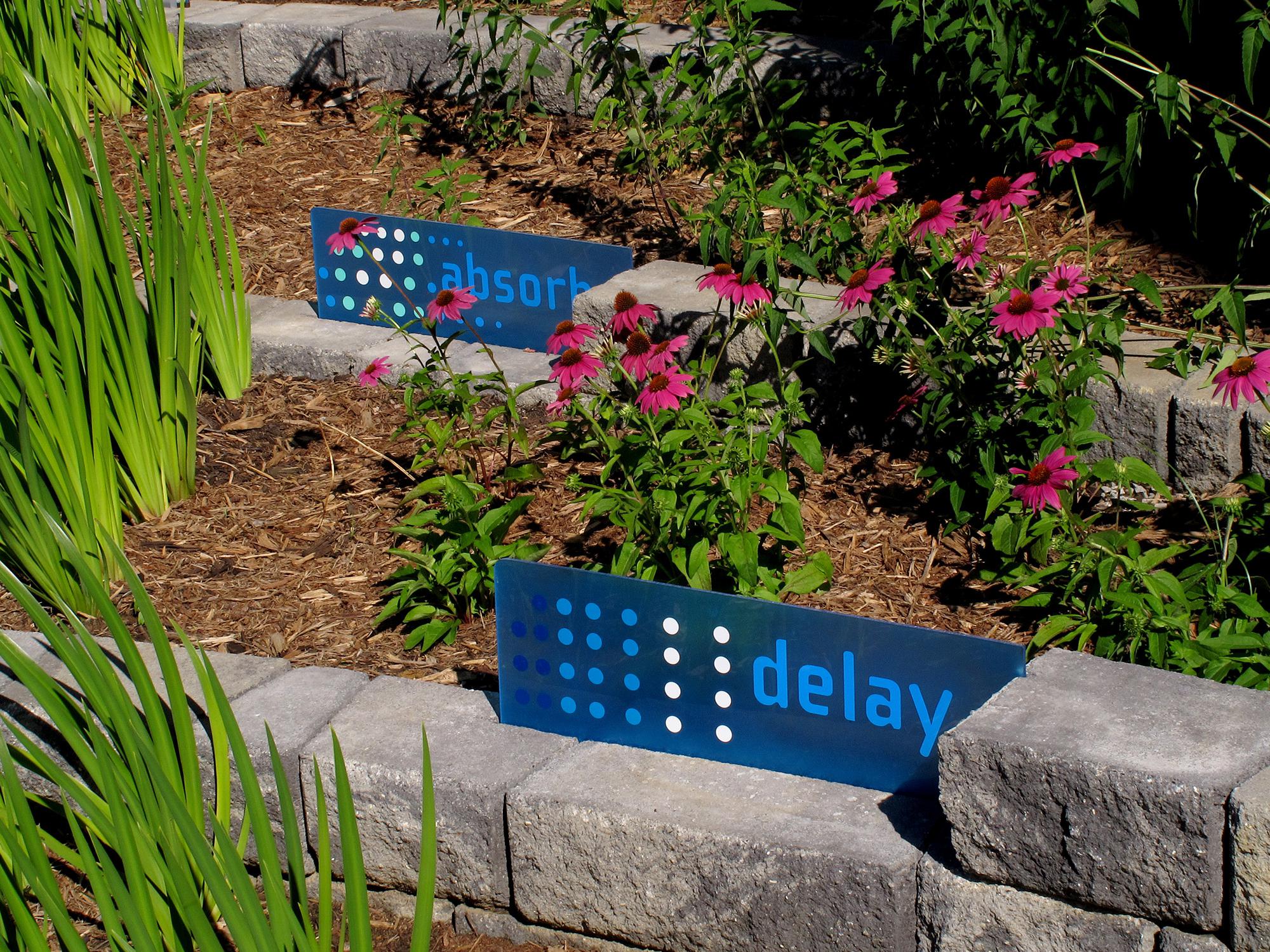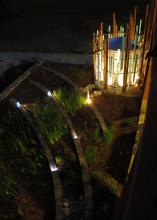Information Possibly Outdated
The information presented on this page was originally released on December 19, 2018. It may not be outdated, but please search our site for more current information. If you plan to quote or reference this information in a publication, please check with the Extension specialist or author before proceeding.
Rain gardens are good water management tools
STARKVILLE, Miss. -- A well-designed landscape can subtly slow down and filter excess water, an important job for Mississippi gardens.
A rain garden can be a key element in a smart landscape. While it can take many design forms, a rain garden is a depression in the landscape that collects water with the purpose of slowing it down, cleaning it, keeping it cool and allowing the ground to absorb it.
Bob Brzuszek, Mississippi State University Extension Service professor of landscape architecture, said water plays a vital role in all landscapes and managing it is very important.
“The rainwater that leaves your property is not isolated,” Brzuszek said. “That water overflows into a series of roadway ditches or drainage inlets, which lead to local streams, rivers and ultimately, the Gulf of Mexico.”
Water picks up sediment, nutrients and pollutants along the way, and these can significantly impact the health of the state’s water bodies. Using rain gardens is one way to limit the water that flows away from the landscape, carrying whatever it picks up along the way.
“There are a number of different things you can do in your landscape that can improve or maintain the water quality on your property,” Brzuszek said. “Some techniques store or detain water temporarily to prevent flooding downstream, and others capture water so it can be reused for watering plants.”
Cory Gallo, MSU associate professor of landscape architecture, said a rain garden primarily slows down water’s speed and filters it before it leaves the property as runoff. These structures look like shallow depressions when not full of water.
“Ideally, you can’t tell a difference between it and another part of the landscape,” Gallo said.
The soil type on a site determines how to install the rain garden, he said.
“If your soils have decent drainage, you dig a depression, fill it in with a sandy loam mix that acts like a sponge, and when it rains, the area fills up with water that slowly drains away,” Gallo said. “If the existing, native soil below the depression is clay, you have to put in a drain, or else the area would simply collect water.”
Gallo said these gardens are not typically used to solve problems at individual homes. But when they are intentionally installed throughout a larger area, such as a neighborhood or other development, rain gardens have a significant, positive impact on the environment.
“Creating one or two rain gardens makes a small impact, but hundreds have a big impact,” he said. “They perform very well in communities that have adopted them completely and installed maybe three or four in every project.”
Gallo said every step individuals take to improve the water quality in their area makes a positive contribution to the overall environment.
“These things have a cumulative impact, and I would like everyone to grasp that they can make a difference,” Gallo said. “We may not see what we’re doing as a big deal, but the cumulative effect of the positive or negative things we do matters to the environment.”
Rain gardens are among several healthy water practices that landowners can implement in their own landscapes
The MSU Extension Service and Department of Landscape Architecture created Mississippi Smart Landscapes as the go-to digital source for those looking for simple, sustainable home landscapes. The site -- http://extension.msstate.edu/smartlandscapes -- offers a variety of information to support environments that encourage wildlife, use water wisely, lower energy costs, and benefit both homes and neighborhoods.











